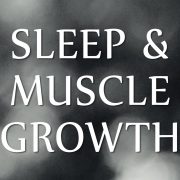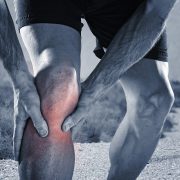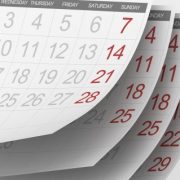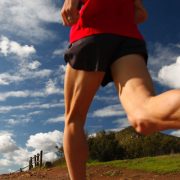You are a dedicated runner that trains on a regular basis. You have the best of intentions with your training, but lately, no matter how hard you work out, you aren’t making any gains. You have plateaued. What has really happened is that your body has adapted to your workouts and it needs new challenges to get stronger. It is unrealistic to think that any athlete can perform at peak level throughout the entire year. The body has to be provided the opportunity to develop various energy systems through specific workouts. For long-term improvement, a window of time must be provided to rest and recover from the stress loads applied to the muscles and cardiovascular system. This is where periodization comes into a runner’s program. Periodizaton creates phases of training or “periods” to keep your body working hard, while still giving it adequate rest. It answers how hard, how long and how often a triathlete should train to reap the benefits of training without burning out or getting injured.
With training encompassing so many elements of your life, it has literally become a lifestyle – sleep, eat, train, repeat. However, this lifestyle of training, doesn’t effectively get your preapred for the season’s first big race. On the other hand, going for a long run the Monday after your big race and training every day until your next race isn’t productive for you either. The reason being, you will not be able to push the body beyond its normal performance level and then you don’t allow enough time for the body to adapt to the stress loads.
We recommend breaking the year into four training “seasons”: Pre-Season, Pre-Competitive, Competitive and Off Season. Each season has a different performance objective to optimize your training time for maximum results. The duration of training cycles vary based on individual identified weaknesses during assessments, but typically consist of the followings:
Pre-Season (12 weeks): Develops maximum aerobic capacity, muscular strength and flexibility; this is also an ideal time to work with your coach to help with technique and mechanics relative to swimming, cycling and running.
Pre-Competitive (8 weeks): Continued development of aerobic engine, final stage of maximum strength development, and the implementation of slight lactate tolerance intervals.
Competitive (4 Cycles of 7 weeks): Specialization is the main component of this season. Your anaerobic threshold and sprint training should make up the high-quality workouts during the week. Also during this phase is the increased need for rest – ideally one complete day of rest per week to help you recover both mentally and physically.
Off Season (4 weeks): This is where you deviate away from heavily structured training. Instead of structured training, you are back to casual athletic activities. You don’t want to become so inactive that you begin to lose the conditioning you have worked so hard to achieve throughout the year; you do, however, what to remain active and healthy.
Periodization – Step One: Establishing Goals
This step involves establishing your long-term goals and developing a plan for achieving each of your goals. This step needs to be quantified, simple, optimistic and realistic. Though this sounds like an easy task, it takes real brainstorming to narrow this first step down and onto paper. An example of an unrealistic long-term goal: “I want to be fast”. There is no way to quantify fast and there is no time line established to complete it. It also doesn’t tell you what you are setting your standards against.
If you say: “I want to make the podium for my age group the OUC Half Marathon in December” – this is quantified, specific and with a little research you can determine what it will take to surpass the current top age grouper to achieve the status you are looking for.
We recommend setting three sets of goals – 3-month, 6-month and 12-month. The most important thing to remember when you are sitting down to establish your goals is that they need to be specific and each should have a date applied. Without specific goals, you will quickly lose your motivation to stick to the homework, especially when it becomes difficult (due to either the duration or intensity levels required) or boring (i.e. stretching).
Periodization – Step Two: Determining a Starting Point With Your Training
If you are starting at a minimum fitness level, you will have to increase your overall strength and endurance before your dive into a comprehensive performance training program. As a general rule of thumb, strive not to increase your duration of your overall workouts by more than 5-8% every other week. Once you have been consistent with some level of training for six to eight weeks without any physical set backs, it is time to determine exactly where your fitness levels are – this will identify your strengths and weaknesses and what to address with daily training to maximize your training time (especially for those of you that work and/or have a family to balance).
The main concept to keep in mind when it comes to training is to strengthen weaknesses which have been specifically identified through field testing. Triathletes, like any athletes, have a tendency to complete workouts focusing only on the elements where strength already exists. For example, in the gym, you rarely see anyone working their legs due to the high levels of lactic acid and associated increased heart rate levels. Instead they avoid these uncomfortable exercises and complete lower intensity exercises which do not address their physical limiters. If you are riding your bicycle, and you are not a strong climber, how often do you go out and complete hill repeats to increase your strength and lactate tolerance? It is not that you are soft; it is simply human nature to do the activities where we feel strong and confident.
When it comes to assessments, it is imperative that you capture three key testing data points in field testing: aerobic capacity, muscular strength and lactate tolerance. We suggest testing these three variables within the training modalities that you have been using over the last six to twelve months. The important thing to keep in mind with establishing base line assessment numbers is to be consistent with your testing protocols. For example, if you use running for your cardio training, it would not be a wise choice to use a Concept 2 Rower for your lactate tolerance and aerobic capacity testing due to the different muscle groups and demands on the cardiovascular system – ultimately your testing data would be inaccurate.
Periodization – Step Three: Establishing a Training Program Based on Your Field Testing Results
This is where a human performance specialist can be an asset to a runner’s development program – identifying where the most progress can be achieved in the shortest amount of time. As an illustration, a runner gets a running coach to help work on their biomechanics relative to running. They may become more efficient at the 5k distance, but if he or she doesn’t have the strength and cardio capacity to run long distance, they will literally run out of gas long before reaching the 13.1 finish line. The same applies to developing the training protocols that are going to maximize the appropriate energy systems to enhance the elements of aerobic capacity, muscular strength and lactate tolerance specific to running longer distances.
If you are serious about making performance gains, periodized training will ensure that you continue to make measurable progress and steps towards achieving your goals.





